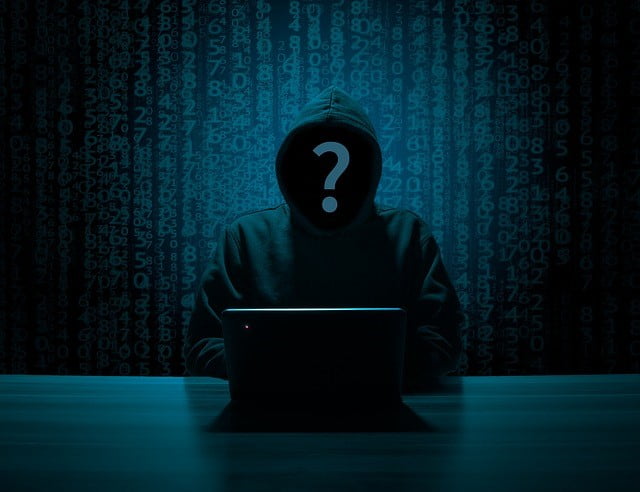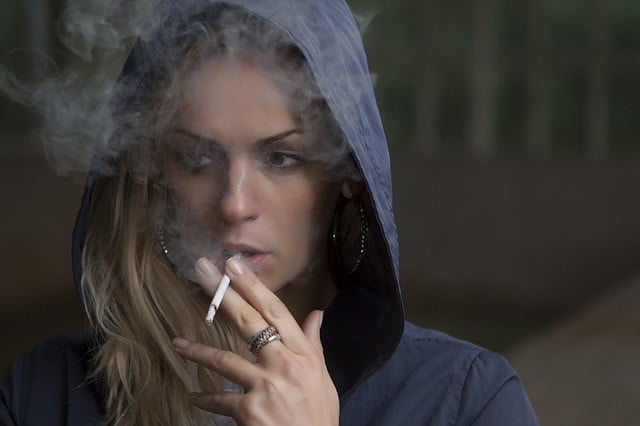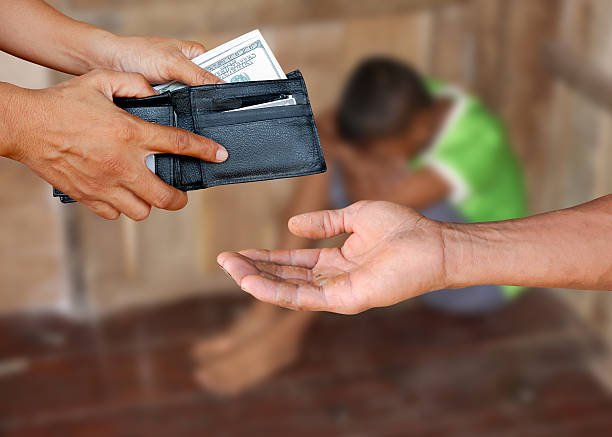Each year across the UK, hundreds of children are removed from harmful situations by the police and placed into ‘Police Protection’. In this article we take a practical look at this specific piece of legislation, which if used responsibly, can be a very valuable tool in safeguarding vulnerable children. In a few places we also offer some opinion as to what some of the issues are when a child is placed into police protection.
What is Police Protection?
Police Protection is an emergency power under Section 46 Children Act 1989 which allows any police officer to protect a child who is reasonably believed to be at risk of significant harm.
Section 46 states: ‘where a constable has reasonable cause to believe a child would otherwise be likely to suffer significant harm he/she may: –
- remove the child to suitable accommodation and keep him/her there; or
- take such steps as are reasonable to ensure that the child’s removal from any hospital, or other place, in which he/she is then being accommodated is prevented.
Where a constable exercises the above power, the child is deemed to be under police protection.
What is ‘significant harm’?
Harm is defined by Section 31(9) of the Children Act 1989 as: –
‘the ill-treatment or the impairment of health or development including, for example, impairment suffered from seeing or hearing the ill-treatment of another’.
Development is described within the act as ‘physical, intellectual, emotional, social or behavioural development’ whilst health includes ‘physical or mental health’. Ill-treatment includes ‘sexual abuse and forms of ill-treatment which are not physical’. When establishing whether the harm to a child is significant, professionals should compare the health and development of that child with what should reasonably expected of a comparable child.
Significant harm means:
Physical – physical abuse is deliberately hurting a child, causing injuries such as bruises, broken bones, burns or cuts.
Emotional – this is the ongoing emotional maltreatment or emotional neglect of a child. This includes psychological abuse and can seriously damage a child’s emotional health and intellectual, social and behavioural development.
Neglect – an ongoing failure to meet the child’s needs. Not providing food, clothing, supervision, medical or health care.
Sexual Abuse – when a child is instructed, coerced or forced to take part in sexual activities.
When should Police Protection be used?
The overriding principle is that wherever possible the decision to remove a child from a parent or carer should be made by a court. Police Protection should therefore only be used in emergency situations and where it is necessary to ensure the immediate safety of the child.
Our Comment: We often sit in missing children strategy meetings where we hear professionals say that when the child is found he/she must be put into Police Protection (PP). This view is incorrect and whilst the circumstances and information gathered during a missing episode may give strong support for placing a child in PP, the important thing to realise is that it is for the individual officer to make the decision ‘there and then’. The officer must be satisfied that the criteria is made out i.e. ‘reasonable cause to believe that a child would otherwise suffer significant harm’. Where the child is not under a care order then consideration should be given to seeking an Emergency Protection Order whilst the child is missing.
Police Protection has been used incorrectly to circumnavigate the judicial procedure. The underlining principle is that placing a child in police protection is an emergency power, only to be used when absolutely necessary. Wherever possible the decision to remove a child from a parent should be made by a court. In at least one documented case police protection was used where a parent refused to agree to their child being accommodated under Section 20. It should never be used where the child is not in immediate danger and there is an opportunity for social care to seek an order from the court to protect the child. A good question for a police officer to ask when deciding whether to exercise the power under s46 is to determine whether the risk of harm is so great to the child, that any delay would put the child at significant risk (or further risk). If the answer is ‘yes’, then it would be unthinkable not to put them in PP.
What is suitable accommodation?
Suitable accommodation can be local authority accommodation such as children’s home, ‘other provision’ or foster care. It can also mean placing the child with a suitable relative or other appropriate carer. When considering whether a relative can provide suitable accommodation a thorough risk assessment should be conducted jointly by police (the Designated Officer) and social care. This is to determine the individual’s suitability to accommodate the child. Where relevant, suitable accommodation can also mean ensuring that the child remains in hospital. A police station is not classed as suitable accommodation.
Our Comment: Police guidelines state ‘a police station is not classed as suitable accommodation’. Why then do we continue to see the widespread practice of police officers taking children to police station’s after they have used their emergency power? Are officers ignorant of the guidance and law? Sometimes yes, but many officers do their utmost best to obtain suitable accommodation before resorting to the inevitable – the police station. The problem is the availability of suitable accommodation, particularly after office hours and during the night. I am sure we can all agree that a child should only be taken to a police station in exceptional circumstances.
What are ‘exceptional circumstance’? It’s simple, it means that there is no immediate local authority accommodation available and nowhere else to take the child. So, the only option is to ‘temporarily’ take the child to the police station whilst accommodation can be found. Through no fault of any of the professionals involved, this can sometimes take many hours and therefore a police station ceases to be temporary. It is an all too familiar scene to see a young person sitting in front of a TV in a police canteen, whilst the officer looking after the child dips into their own pocket to buy the hungry child a pile of sandwiches and a fizzy drink. Meanwhile across at the civic centre Social Workers and placement teams work tirelessly to identify a suitable foster carer or children’s home. We have dealt with children who have spent the best part of 10 hours in a police station waiting for accommodation to be confirmed, some of whom are pretty volatile and extremely unhappy to be in police protection in the first place.
The issue is that we are all let down by the system – limited resources and funding coupled with a lack of emergency care placements. There is no easy answer but in our view senior leaders both in the police and social care need to have a local system in place so that children don’t end up in police stations for long periods.
I have concerns over an unborn child. Can the child be placed in Police Protection?
It sounds silly to even say it, but unborn children cannot be put in Police Protection. Where there are serious safeguarding concerns, the unborn child should be placed on a Child Protection Plan. At a case conference, plans should be discussed for social care to apply to the court for an Emergency Protection Order upon the birth of the child. Police Protection should not be used to replace a lack of forward planning and circumvent proper process through the court. It is not possible to apply for an EPO prior to the birth.
It is common for the expectant mother to disappear at the time of the birth or present to a different hospital. The key to ensuring the mother is located and the new born child is taken into emergency protection, will be the close liaison between the social worker and the police child protection team. If immediately after the birth it is believed that the child is likely to be at risk of significant harm and no order is in place, then police can use their police protection powers to ensure the safety of the child.
Do police have a power of entry to take a child into Police Protection?
No – there is no specific power of entry to enter and search premises to remove a child into police protection. To enter premises the constable would have to rely on a specific search warrant or powers under Section 17 of the Police and Criminal Evidence Act 1984. This provides police with power to enter and search premises for the purpose of saving life and limb (or prevent loss or serious damage to property). Other reasons to enter under this power include to arrest a person for an offence.
Can police use force to take the child into Police Protection?
A slightly grey area – whilst it is not fully stated within the 1989 Children Act it is implied that police can use reasonable force to both take a child into police protection or to keep them at suitable accommodation.
What must the Initiating Officer do after taking a child into Police Protection?
The Initiating Officer is the officer that places the child into police protection. The immediate priority for the initiating officer is to assess whether the child is in need of any medical assistance. The officer should then remove the child from the risk of harm that prompted the use of the power and take them to suitable accommodation. Where the circumstances also involve criminal offences e.g. physical abuse by a parent, then it is good practice for other officers to deal with any investigation and arrests, whilst the initiating officers deals purely with the child.
The officer must then establish and record the following:
- the full details of the child and any persons connected to the child
- who has parental responsibility
- the full circumstances and rationale for placing the child in police protection
- the time police protection started and the time it expires, so that there is no doubt when the 72 hours ends
- where the child has been accommodated
- any discussions with other professionals or agencies
The officer MUST take the following action:
- as soon as is practicable inform a supervising officer who must be at least an Inspector or above. Where the role is performed by a temporary or acting Inspector, they must have been authorised by the Force’s Chief Constable to act up in the role. This officer then becomes the Designated Officer
- inform the Local Authority at both the place where the child is found and also where the child is ordinarily residing. The officer should update the authorities of the steps taken, the reasons why and any further steps that may need to be taken
- take steps to contact the parents, anyone with parental responsibility or any other person with whom the child was living with immediately before being taken into police protection. If the child is removed from an address and there was no adult present at the time then the officer should leave a written notice informing the parent/carer that the child has been removed
- where the child appears to be capable of understanding, the officer should tell them what steps have been taken, the reasons and any further steps that may need to be taken
What is and who can have Parental Responsibility (PR)?
Parental responsibility means all the rights, duties, powers, responsibilities and authority, which by law a parent of a child has in relation to the child and his/her property.
Who normally has PR:
- the birth mother of a child will always have parental responsibility
- the father, where he and the mother are married to each other at the time of the birth
- the father where he is not married to the mother at the time of the birth but is named on the birth certificate when registered (post 1st December 2003)
- a father who later marries the mother
- the father where he and the mother have agreed and drawn up a parental responsibility agreement
- the father where the court makes a Child Arrangement Order in the father’s favour after the parents could not agree on the father having parental responsibility
- the husband or civil partner of the mother where they acquire parental responsibility by entering into an agreement, or if they obtain a child arrangement order for residence
- same-sex partners who were civil partners at the time of treatment
- the second parent in non-civil partnerships if they apply for parental responsibility, make a parental responsibility agreement or jointly register the birth with the first parent
- a Local Authority where a Care Order is in place. Although the LA will have parental responsibility there will still be some decisions which will require those others who have PR to agree upon, e.g. what religion a child should be brought up in, allowing the child to live outside the UK for more than 28 days
Police protection does not give the police parental responsibility.
What role does the Designated Officer play?
The Designated Officer (DO) must be at least an Inspector or above. Where the role is performed by a temporary or acting Inspector, they must have been authorised by the Force’s Chief Constable to act up in the role. The role of the DO is to ascertain and promote the child’s welfare and best interests. It is a continuous responsibility throughout the period of police protection but can be handed over verbally to another Inspector (e.g. at a shift change). The DO should record that they accept responsibility for the child as soon as is practicable after Police Protection has been taken out, and ensure that the circumstances for keeping the child in protection are regularly reviewed.
The officer MUST take the following action:
- visit and speak to the child where they have not already been spoken to by the Initiating Officer, to establish their immediate welfare and to establish that the child’s needs have been correctly assessed
- complete a risk assessment on the accommodation to establish if it is suitable. This is particularly important if the decision has been made to accommodate the child with relatives or friends
An officer cannot perform both the roles of Initiating and Designated officer.
How long does Police Protection last?
No child can be kept in Police Protection for more than 72 hours.
What part does the child play?
It is important that professionals always endeavour to listen to and respond to the needs and views of the child. Efforts should be made to keep them appropriately informed, explaining what has already happened, the reasons and what is going to happen next.
Can the child be visited whilst in Police Protection?
The DO is obliged to allow contact with certain people whilst a child is in police protection, provided it is reasonable and in the child’s best interest to do so. The list of people permitted to see the child are:
- the parents
- any person who is not a parent of the child but who has parental responsibility
- any person with whom the child was living immediately before being taken into police protection
- any person in whose favour a Contact Order is in force in respect to the child
- any person who is allowed to have contact with the child by virtue of an order under Section 34 of the Children Act 1989 (parental contact etc. with children in care)
- any person acting on behalf of any of those persons
What is the role of the Local Authority?
The role of the local authority is defined in Section 21 Children’s Act 1989. It outlines the duty of the authority to receive and provide accommodation for children in police protection, in detention or on remand. In relation to police protection the law states:
‘Every local authority shall receive, and provide accommodation for, children— in police protection whom they are requested to receive under section 46(3)(f) of the act’.
When informed by the police that a child is in police protection the Local Authority should instigate safeguarding procedures. Where appropriate there should be a strategy meeting/discussion between the police, Children’s Social Care and any other relevant parties. A statutory assessment of the child should be conducted. Where a decision is taken to accommodate the child with either family or friends, a full risk assessment should be completed, including checks by both police and CSC on the potential carer and anyone else over 16 years in the household. The authority must be satisfied that the placement is the most suitable way of safeguarding and promoting the welfare of the child. The checks should include the following:
- establishing the child’s relationship to the carer (CSC)
- establishing the potential carers capacity to care for the child
- interviewing the proposed carer (CSC)
- checks on all persons over age 16 within the household – looking at areas such as criminal convictions, domestic abuse, substance and alcohol abuse or mental health issues (CSC and Police)
- inspect the accommodation to ensure that it offers a suitable home environment (CSC)
- assessing the area and neighbourhood around the accommodation (CSC and Police)
- establish the views of parents or other with parental responsibility (CSC)
Important: It is essential that the social worker establish the wishes and feelings of the child (subject to age and understanding).
What happens if a child is removed or escapes from police protection?
Where a child manages to escape from police whilst in police protection the child should be treated as a missing child. By the very fact that they were in police protection, it is highly likely that they should be treated as a High risk missing person.
Where a third person has taken or has encouraged the child to run away from Police Protection then there are two chief pieces of legislation that are available to professionals charged with locating the child – Sections 49 & 50 Children’s Act 1989.
What is Section 49 Children’s Act 1989?
Section 49 deals with young people who are subject to either a care order, an Emergency Protection Order (EPO) or who are in Police Protection.
A person commits an offence if, knowingly and without lawful authority or reasonable excuse, he:
- takes a child to whom this section applies away from the responsible person;
- keeps such a child away from the responsible person; or
- induces, assists, or incites such a child to run away or stay away from the responsible person.
This applies to a young person who is 16 years or over. To prove this offence, the police need to prove that the offender knew:
- that the child is subject to a care order, an emergency protection order or was in police protection;
- that the offender knew that the responsible person had not given their permission for the child to stay with the offender.
Section 49 is a summary only offence. This means that it can only be tried in a Magistrates Court and has a maximum sentence of 6 months imprisonment.
What is Section 50 Children’s Act 1989?
Section 50 Children’s Act 1989 deals with Recovery Orders. Where a child who is under a Care Order (Interim or Full), an Emergency Protection Order or under Police Protection, a court can issue a Recovery Order where it there is reason to believe that a child:
- has been unlawfully taken away or is being unlawfully kept away from the responsible person;
- has run away or is staying away from the responsible person; or
- is missing.
The order directs any person to produce the child on request to any authorised person, if they are in a position to do so. It also authorises the removal of the child by any authorised person and requires any person who has information as to the child’s whereabouts to disclose that information, if asked to do so, to a constable or an officer of the court. A constable can to enter any premises specified in the order and search for the child using reasonable force if necessary. It is an offence to intentionally obstruct an authorised person exercising the power of an order.
How does Police Protection end?
The rules governing the end of police protection are strict. It is important to know that Police Protection does not end when a child is handed over to Children Social Care. It can only cease when:
- 72 hours has passed
- an Emergency Protection Order (EPO) or Interim Care Order (ICO) has been obtained by either the Local Authority or police;
- the child has been provided with accommodation by the local authority under Section 20 and the child is no longer considered to be at risk of significant harm
- the DO and local authority agree that the child is no longer at risk and can return home.
The decision to release a child from police protection should only be made following a strategy discussion between police and Children’s Social Care and it must be agreed that the child is no longer at risk of significant harm. This agreement must be documented.
Who should be informed when Police Protection ends?
Police must inform the following people when police protection ceases:
- the local authority within whose area the child was found
- the local authority within whose area the child is ordinarily resident
- the child’s parents or anyone else with parental responsibility
- any other person with whom the child was living immediately prior to being taken into police protection










